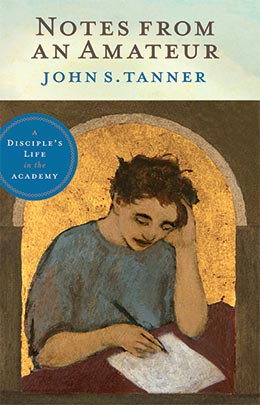Saving the Supernatural
John S. Tanner, Notes from an Ameteur: A Disciple’s Life in the Academy (Provo, UT: Religious Studies Center; Salt Lake City: Deseret Book, 2011), 120–2.
Halloween was oddly oxymoronic for our family this year. It mixed holy day and holiday in equal measure. We baptized my granddaughter Jane in the morning and took her trick-or-treating in the evening. For her baptism and confirmation, Jane dressed up in a beautiful white dress; her countenance positively shone. For Halloween she dressed up in a black witch’s dress and hat; her face was colored green.
When I spoke at her confirmation, I told Jane that from now on, Halloween could be a hallowed day for her because it marked the day she joined the Church. For most people, however, Halloween scarcely seems hallowed. It is a holiday hollowed out of any sacred or even edifying significance. Yes, children love Halloween, to be sure. What child wouldn’t relish a night set aside for dressing up in costumes and canvassing the neighborhood for candy? Likewise, adults enjoy seeing costumed children as well as putting on costumes themselves and decorating their houses with holiday knickknacks. Many Halloween traditions are fun and innocent enough.
But frankly many traditions associated with Halloween are anything but hallowed or innocent. The holiday has a dark, demonic side. It delights in the macabre, glorifies gore and terror, and celebrates the sinister and superstitious. The older I grow, the less stomach I have for the nightmarish side of Halloween. I now know too well from reading the news that nightmares can come true and from studying the past that real horrors have haunted human history.
So can this secular holiday, with its sometimes-sinister trappings, retain any serious religious significance for the modern world? And if so, how?
Perhaps it can serve some religious use, at least in an admonitory way. Halloween can serve to remind believers what has happened to the supernatural in the modern world. In our day, the supernatural has been relegated to the domain of superstition. Demons are often regarded as no more real than elves and fairies. They are thought to belong in Halloween horror films but are surely not to be given credence by rational adults. Likewise, ghosts enter the modern mind through Halloween caricatures, phantasms to conjure up some fun at holiday parties. Since the Enlightenment, our age has conspired to confine the spirit world to the realm of the imagination. Many now automatically regard anything supernatural as mere superstition.
An eccentric seventeenth-century physician, writing on the cusp of the Enlightenment, saw this coming. In a very odd book entitled Religio Medici (Religion of a Doctor), Sir Thomas Browne predicted that the decline of belief in witches would be accompanied by the decline of belief in God: “They that doubt of these [i.e., witches], do not only deny them, but Spirits; and are obliquely and upon consequence a sort not of Infidels but Atheists.” The Book of Mormon also saw Enlightenment skepticism coming. It prophesied that in the last days many would deny the reality of hell and of the devil, as well as of miracles (see Mormon 8:26, 9:7; 2 Nephi 28:22).
Halloween may serve this useful purpose. It may remind us to be skeptical of skepticism regarding anything seemingly supernatural. On seeing his father’s ghost, Hamlet says to his skeptical friend Horatio, “There are more things in heaven and earth, Horatio, than are dreamt of in your philosophy.” Indeed there are. The world contains spiritual realities, though some scoff at the notion. Now, I am not suggesting we return to a belief in witches or vampires. This essay is not a brief for superstition but a reminder that we live in an age accustomed to ruling out, a priori, anything miraculous or seemingly supernatural.
I know of no more revealing anecdote to illustrate this point than a statement Charles Dickens published about Mormonism’s miraculous origins. In 1851, writing in Household Words, Dickens (or a surrogate) derided Mormons for “seeing visions in the age of railways.” Visions and railways! Dickens arrogantly assumes that these are patently incongruous. How can anyone believe in angels in a technologically advanced age of railways! Dickens uncritically pooh-poohs the very idea of visions as a relic of an earlier, precritical age. This is the same logic that turned All Hallows’ Eve into Halloween.
I do not believe in the superstitions we amuse ourselves with at this season of the year, but I do believe in a world of spirits. Jane will need to learn that Halloween ghosts are playful fictions, but the Holy Ghost is a precious fact. There are indeed more things in heaven and earth, Jane, than are dreamt of in our philosophy.
